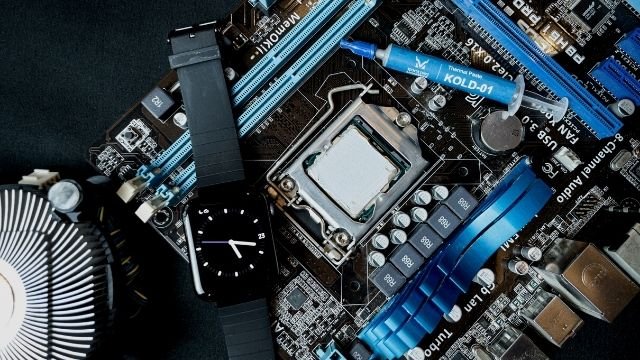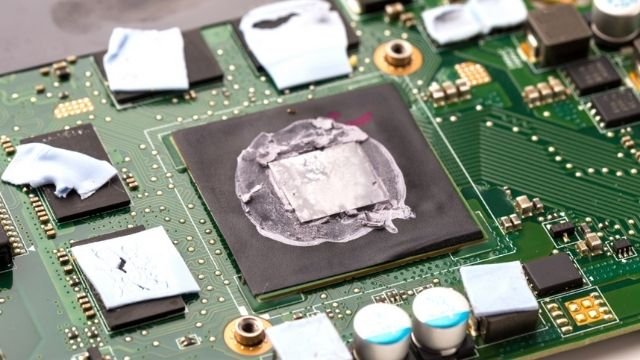Why Should I Reapply Thermal Paste on CPU?
Many people think applying thermal paste is a one-time job; you have to apply it once and you’re done forever. But — that’s not the case! Depending on the quality of the thermal paste you use, you’d have to reapply it anywhere from a few months to a few years.
But why is that? Why do you need to reapply thermal paste, again and again? Well, keep reading to find out!
Why do you need to replace thermal paste?
Over time, a thermal paste degrades and loses its thermal conductance performance.
No matter how awesome your thermal paste is, it’s going to degrade sooner or later. And when it does, its appearance will be changed, and it will also suffer from degraded heat performance, which can cause your computer to overheat.
As time passes, the paste will dry out and develop “cracks” over its surface after going stiff. As thermal paste works well due to its fluid-like form factor, it doesn’t perform well when it goes harder. Due to the degraded heat conduction and gap-filling properties, the heat won’t be transferred to the heat sink efficiently, hence your computer will overheat.
When it does overheat, it will thermally throttle, meaning the performance will fall significantly to keep the hardware safe. You will face random app and system crashes. Plus, your PC will also be prone to long-term damage. Due to all these reasons, you need to replace your thermal paste whenever it degrades.
How often should you change thermal paste?
There’s no single answer to this question, as it varies wildly based on which thermal paste you use and what you do on your computer.
If you’re using a low-quality thermal paste and do heavy processing on your computer, you may need to replace the paste after a couple of months of usage. On the other hand, if you’re using a high-quality thermal paste, like Kooling Monster’s KOLD-01, you’re good to go for at least a few years. However, if you do heavy processing on your computer daily, you will need to replace the paste sooner.
In most cases, you can never figure out whether you should replace the paste just by looking at the duration alone. You also have to look at other factors, which we will discuss in a bit. (Learn more about How Often Should You Replace Thermal Paste? )
How do you know your thermal paste needs to be reapplied?
There are a few ways you can tell that you need to reapply thermal paste, and here they are.
1. By looking at the computer’s performance
The entire point of thermal paste is to keep your PC cool and performing well. If the thermal paste stops working effectively, your PC will start running hot. Its average temperature will start to rise over time, and you will notice a hotter peak temperature when doing heavy tasks.
The general rule of thumb is that your CPU shouldn’t go higher than 55 degrees Celcius under normal usage. Plus, it should never cross 85 degrees Celcius, even under heavy usage like gaming. (Learn more about How to Check CPU Temperature and Why Is It Important?)
Furthermore, there are other indications you can notice. For instance, your apps may crash more often. Your gaming FPS might go down significantly. Your OS may crash unexpectedly. All in all, your PC won’t perform well when the thermal paste degrades.
2. By analyzing the appearance of thermal paste
Another way to check whether you need to replace the thermal paste is to look at it directly. You see, when a thermal paste is new and performing effectively, it has a viscous, fluid-like shape that’s useful in filling air gaps between the CPU and the heat sink.
However, when it degrades, it won’t retain the same form factor. It may harden out and become a solid layer. Due to the dried-out form factor, it may also show various cracks throughout its surface area, which significantly reduces the gap-filling performance.
Last but not least, you may see oil bleeding away from the main chunk of the thermal paste. All these visual identifiers will help you figure out whether you need to replace the thermal paste in your computer.
What happens if you don't change thermal paste periodically?
Depending on the quality of your thermal paste and the type of workload you throw at your PC, you should periodically change the thermal paste. If you don’t, you may face different kinds of problems.
If you’ve applied a lower quality paste and haven’t changed it for more than a few years, you will face a significant downgrade in performance. Random crashes and thermal throttling will be a problem you face often.
Plus, if you’re a power user and do resource-intensive tasks on your computer, you will notice your PC takes longer to complete a task than it used to do quicker before. Plus, the average temperature of your PC will start to stay higher than usual.
If you don’t do anything resource-intensive, however, you may not notice the difference that often. For instance, if you only use your computer to write essays, watch YouTube, or browse the internet, you may not notice a significant downfall in performance.
However, if you know you haven’t changed the thermal paste for a long time, it’s about time you do it now. You will definitely notice an improvement in terms of thermal management and overall system smoothness.
The bottom line
Thermal paste is an essential component of your PC’s thermal management system — and you need to replace it periodically to keep the computer performing well.
It’s important to get your thermal paste from a reputed brand that manufactures high-quality thermal paste — and Kooling Monster KOLD-01 is just the perfect option in this regard. With KOLD-01, your PC is set to stay cool for at least a few years down the line.




